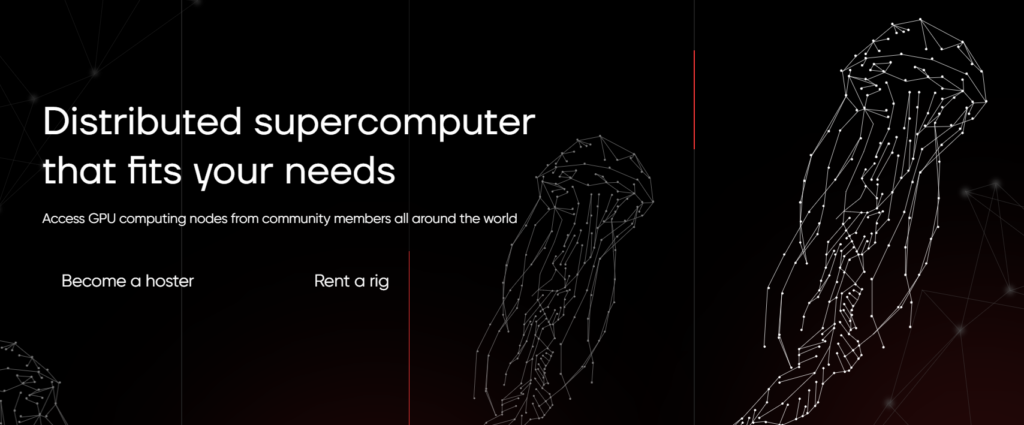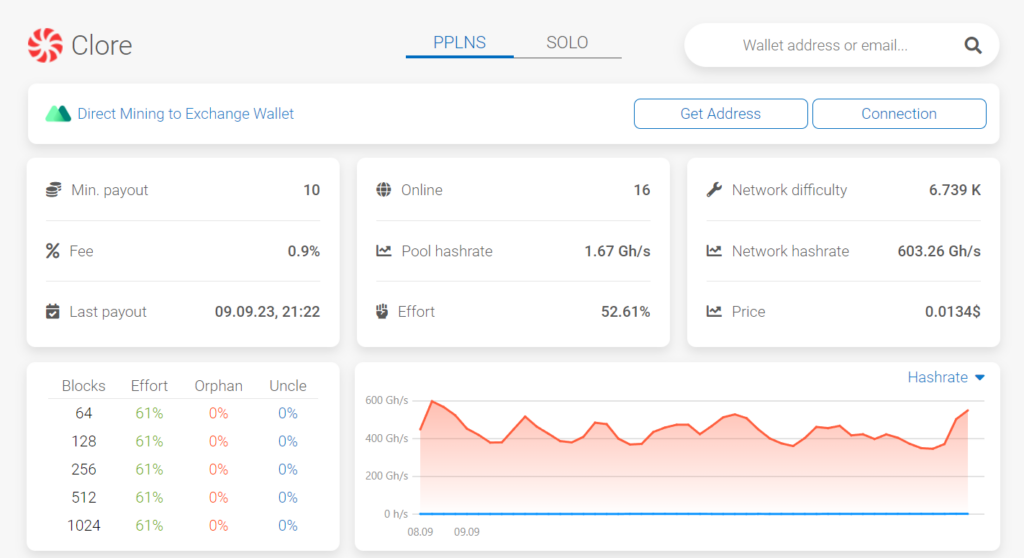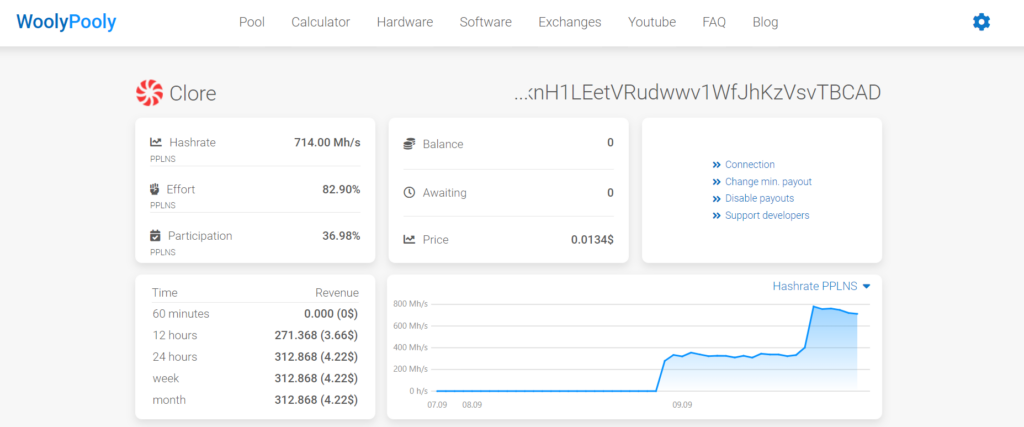In the ever-evolving realm of cryptocurrencies, understanding how to mine Clore can be your ticket to a profitable venture. As the digital gold rush continues, Clore emerges as a promising contender in the crypto arena. But how does one tap into this potential goldmine? Let’s embark on a journey to uncover the secrets of Clore mining.
Table of Contents
What is Clore?

Understanding the Clore Phenomenon
Clore is more than just a cryptocurrency; it represents a groundbreaking concept in the digital realm. At its core, Clore functions as a distributed supercomputer, designed to cater to diverse applications such as AI training, movie rendering, and cryptocurrency mining. Its distinct tokenomics ensures a decentralized approach, promoting fairness and equity within its ecosystem. In essence, Clore is a beacon of innovation, merging computational prowess with the principles of blockchain.
Why Mine Clore?
A Transparent Beginning
Many cryptocurrencies kickstart their journey with a premine or an Initial Coin Offering (ICO), which can sometimes favor early adopters or large investors. Clore, on the other hand, championed transparency from the outset. Its launch was devoid of any premine or ICO, ensuring that every individual had an equal opportunity to mine from the very first block. This transparent inception fosters trust and levels the playing field for all miners.
Resistance to ASIC Dominance
Application-Specific Integrated Circuits (ASICs) have become the powerhouse for many crypto mining operations, often sidelining individual miners who can’t afford these specialized machines. Clore stands apart in this regard. By using Ravencoin algorithm and designed to be ASIC-resistant, Clore ensures that the mining process remains decentralized. This resistance not only promotes a democratic mining environment but also prevents any single entity or group from monopolizing the mining process.
Equitable Reward Distribution
Clore’s reward mechanism is structured to be fair and inclusive. Unlike some cryptocurrencies where rewards might lean heavily towards certain participants, Clore has a balanced distribution system. A significant portion of the rewards goes to the miners, ensuring they are adequately compensated for their computational contributions. This equitable distribution acts as an incentive, encouraging more participants to join the Clore mining community.
Getting Started with Mining
Venturing into the world of cryptocurrency mining can seem daunting, but with the right guidance, it becomes a structured and rewarding journey. If you’re considering mining Clore, here’s a step-by-step breakdown to set you on the right path:
Choosing the Right Hardware
Before diving into the mining process, it’s crucial to equip yourself with the right hardware. The efficiency of your mining operation largely depends on the computational power you bring to the table.
- GPUs: Graphics Processing Units (GPUs) are the backbone of any crypto mining rig. While both NVIDIA and AMD GPUs can be used, their hashrates (a measure of mining power) can vary. For instance, while an NVIDIA RTX 3090 might offer a hashrate of 62 MH/s, an AMD equivalent might differ. It’s essential to choose a GPU that aligns with your budget and desired performance.
Best Miner for Clore
Once your hardware is in place, the next step is to choose the right mining software. This software will interface with your hardware and the Clore network, facilitating the mining process.
For NVIDIA Users
T-rex and Gminer are the most popular choices.
For AMD Users
TeamRedMiner is often recommended, given its optimization for AMD hardware.
For mixed GPU Users
Lolminer supports Kawpow algo for both Nvidia and AMD GPUs.
Configuring and Connecting
With your hardware and software ready, the next step is configuration:
- Mining Pool Selection: While solo mining is an option, joining a mining pool like WoolyPooly can increase your chances of regular rewards. Pools combine the power of multiple miners, increasing the likelihood of solving blocks.
- Connection Details: Ensure you input the correct server details, port number, and your Clore wallet address into your mining software. This ensures that your mined Clore gets credited to your account.
- Optimization: Depending on your GPU, you might need to tweak certain settings for optimal performance. This includes adjusting power limits, core clocks, and memory clocks.
Monitoring and Maintenance
Once your mining operation is up and running, it’s not a ‘set and forget’ scenario. Regular monitoring is crucial:
- Performance Metrics: Keep an eye on your hashrate, temperature, and power consumption. Any anomalies could indicate issues that need addressing.
- Software Updates: Ensure your mining software is always updated. Developers regularly release updates to improve performance and fix bugs.
Joining WoolyPooly: The Mining Pool

In the intricate world of cryptocurrency mining, the decision of whether to mine solo or join a mining pool can be pivotal. WoolyPooly emerges as a prominent choice for those looking to optimize their mining efforts. Here’s a deeper dive into the benefits and processes of joining this renowned mining pool:
The Power of Collective Mining
Mining pools, like WoolyPooly, operate on a simple principle: strength in numbers. By combining the computational power of multiple miners, these pools increase the chances of successfully validating and adding blocks to the blockchain. Here’s why this collective approach is advantageous:
- Higher Success Rate: Solo miners compete against massive mining operations and other pools. Joining a pool like WoolyPooly levels the playing field, increasing the likelihood of earning rewards.
- Consistent Rewards: While the rewards in a pool are split among participants, the frequency of payouts is generally higher. This provides miners with a more predictable and steady income stream.
WoolyPooly: A Cut Above the Rest
While there are numerous mining pools available, WoolyPooly stands out for several reasons:
- User-Friendly Interface: Especially beneficial for beginners, WoolyPooly offers an intuitive platform that makes monitoring and managing mining activities straightforward.
- Transparent Fee Structure: WoolyPooly is upfront about its fees, ensuring miners are aware of any deductions from their rewards.
- Regular Payouts: The pool has set thresholds for payouts, ensuring miners receive their earnings promptly once these thresholds are met.
Getting Started with WoolyPooly

For those intrigued by the potential of mining Clore, WoolyPooly offers a streamlined and efficient platform to kickstart your mining journey. With its support for direct Clore address mining, the process becomes even more straightforward. Here’s a step-by-step guide to get you started:
- Direct Clore Address Mining: One of the standout features of WoolyPooly is its support for direct Clore address mining. This means you don’t necessarily need to create an account on WoolyPooly. Instead, you can use your Clore wallet address as your username in your mining software, ensuring a hassle-free and direct mining experience.
- Configure Your Mining Software: Depending on your preference, WoolyPooly offers two types of mining:
- PPLNS Mining: Ideal for those who prefer a ‘Pay Per Last N Shares’ system. Configure your mining software to connect to
pool.woolypooly.com:3126. - SOLO Mining: For those who prefer to mine solo but want to take advantage of the pool’s infrastructure, use the connection URL
pool.woolypooly.com:3127.
- PPLNS Mining: Ideal for those who prefer a ‘Pay Per Last N Shares’ system. Configure your mining software to connect to
- Monitor Your Progress: Even without an account, you can track your mining progress on WoolyPooly’s dashboard by inputting your Clore wallet address. This will provide insights into your hashrate, pending rewards, and other essential metrics.
- Receiving Payouts: Ensure your Clore wallet is functional and accessible. WoolyPooly will send your mining rewards directly to this address once you reach the payout threshold.
Earnings and Payouts
Navigating the world of cryptocurrency mining can be exhilarating, but understanding the earnings and payout structure is crucial to ensure that the venture is profitable. With Clore mining on WoolyPooly, the rewards system is transparent and structured to benefit the miner. Let’s delve deeper into how earnings and payouts work:
Understanding Mining Rewards
Every time a block is successfully mined, a reward is given out. This reward is a combination of newly minted Clore coins and transaction fees from the block. The amount you earn depends on several factors:
- Your Contribution: The more computational power you contribute to the pool, the larger your share of the reward.
- Pool’s Overall Power: Your earnings are also influenced by the total computational power of the pool. The more powerful the pool, the higher the chances of mining blocks frequently.
- Reward Distribution Method: WoolyPooly uses the PPLNS (Pay Per Last N Shares) system, which calculates your reward based on your contribution to the last N shares of the pool.
Payout Thresholds and Frequencies
To streamline transactions and reduce fees, WoolyPooly doesn’t pay out rewards immediately. Instead, they have a payout threshold:
- Threshold Amount: Once your earned rewards reach a certain amount, WoolyPooly will process the payout. This ensures that transaction fees don’t eat into your earnings.
- Frequency: While the exact frequency can vary, WoolyPooly is known for its regular payouts, ensuring miners have access to their earnings without significant delays.
Direct Clore Address Mining Payouts
For those utilizing the direct Clore address mining feature on WoolyPooly, the process is even more straightforward:
- No Need for Withdrawal Requests: Since you’re mining directly to your Clore wallet address, there’s no need to request withdrawals. Once the payout threshold is reached, WoolyPooly automatically sends the rewards to your address.
- Transparency: You can always monitor pending rewards and past transactions on WoolyPooly’s dashboard using your Clore wallet address.
Conclusion
The realm of cryptocurrency mining is vast and ever-evolving, with new opportunities emerging at every turn. Among these, learning how to mine Clore stands out as a promising venture, blending the allure of potential profits with the satisfaction of being part of a revolutionary digital movement.
Clore, with its unique approach as a distributed supercomputer, offers more than just financial gains. It represents a shift in how we perceive the applications of blockchain technology, from AI training to movie rendering. By choosing to mine Clore, miners are not only positioning themselves at the forefront of this digital revolution but are also contributing to a decentralized and equitable crypto ecosystem.
WoolyPooly further amplifies this experience, providing a platform that’s both user-friendly and efficient. Its transparent operations, combined with features like direct Clore address mining, ensure that miners have all the tools they need to succeed.
In essence, understanding how to mine Clore is more than just a skill—it’s a gateway to the future of digital currencies and decentralized computing. As the crypto landscape continues to expand, those equipped with the knowledge and resources to mine Clore will undoubtedly be at an advantageous position, ready to harness the myriad opportunities that come their way.
FAQs
Why choose Clore over other cryptocurrencies?
Clore’s unique tokenomics and ASIC-resistant nature make it a standout choice for miners.
How often does WoolyPooly payout?
Payouts are processed once you hit the minimum threshold.
Is mining Clore profitable?
Like all crypto ventures, profitability varies based on market conditions, but with the right setup, it can be a lucrative endeavor.


